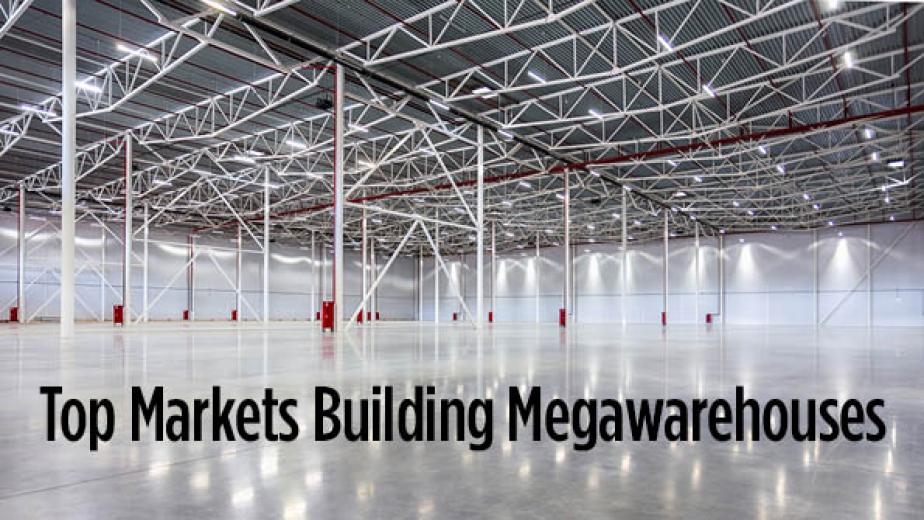1 11
1 11
Over the past five years, the industrial sector started seeing million-sq.-ft. warehouses being built by e-commerce giants in their quest to reach more consumers. Now, numbers are emerging to quantify the e-commerce logistics boom.
Since 2010, approximately 141.2 million sq. ft. in mega-warehouses have been built across the United States, according to a recent report from commercial real estate services firm CBRE. The CBRE study also looked into the top 10 markets for mega-warehouse construction in 2017. Here are the results:
Philadelphia is the third-hottest market for new construction of mega-warehouses in 2017, as five buildings spanning 5.4 million sq. ft. will be built there. This marks somewhat of a dip historically. The city was the top market for mega warehouse construction from 2010 to 2016, absorbing 19.7 million sq. ft. across 16 properties.
Atlanta will be the fourth-busiest market for mega-warehouse construction in 2017. This year, 3.1 million sq. ft. across three buildings will enter the market. That’s in line with historic figure. From 2010 to 2016, 12 mega-warehouses totaling 13.8 million sq. ft. were built in the city, making it number four of top 10 markets for that time period.
Developers in the Windy City have already completed more than 9 million sq. ft. of new industrial space and a similar amount of space is under construction, bringing the total for this cycle to 18.7 sq. ft. With a low 4.6 percent vacancy rate, asking rents are nearing $5 per sq. ft.
Inland Empire takes the crown for construction of mega-warehouses in 2017, with six buildings totaling 6.4 million sq. ft. slated for completion this year. From 2010 to 2016, the city took second place for top markets overall. In that span of time, 13 warehouses totaling 15.4 million sq. ft. were built.
Two buildings totaling 2.5 million sq. ft. will be constructed in Baltimore, signaling a historic jump. Mega-warehouses were not built in Baltimore between 2010 and 2016.
Two buildings totaling 2.2 million sq. ft. are under construction in Dallas/ Ft. Worth this year. Historically, the city has been popular as a distribution point—illustrated by the 13 mega-warehouses (containing a total 14.7 million sq. ft.) built there between 2010 and 2016.
For the first time, Detroit made the cut for the top 10 markets for warehouses under construction, with one building spanning 1 million sq. ft. But seeing cities like Detroit, St. Louis and Boston make the list as sites of mega-warehouse construction is significant as these cities have not historically been major supply chain hubs, says David Egan, head of U.S. industrial research with CBRE. Egan calls it an example of “the shrinking of the supply chain,” noting that as part of their growth strategy e-commerce companies need to be fast in reaching secondary and tertiary markets.
Phoenix will see one mega-warehouse constructed in 2017, also totaling 1 million sq. ft. From 2010 to 2016, the city was the tenth top market overall, with 1.2 million sq. ft. in new construction.
Greater Boston topped this year’s ranking, with a weighted score of 82.3. There is 26.8 million sq. ft. of life sciences space in the area. Vacancy is currently at 7.3 percent, with asking rents of $42.85 per sq. ft.
In 2017, St. Louis ranked seventh out of 10 for mega-warehouse construction. This year, one building will be completed in the city, totaling 1.3 million sq. ft.

